[Visual History of Korea] Divine bell Emile Jong resonates in the hearts and souls of Koreans for 1,250 years
By Korea HeraldPublished : Nov. 20, 2021 - 16:00
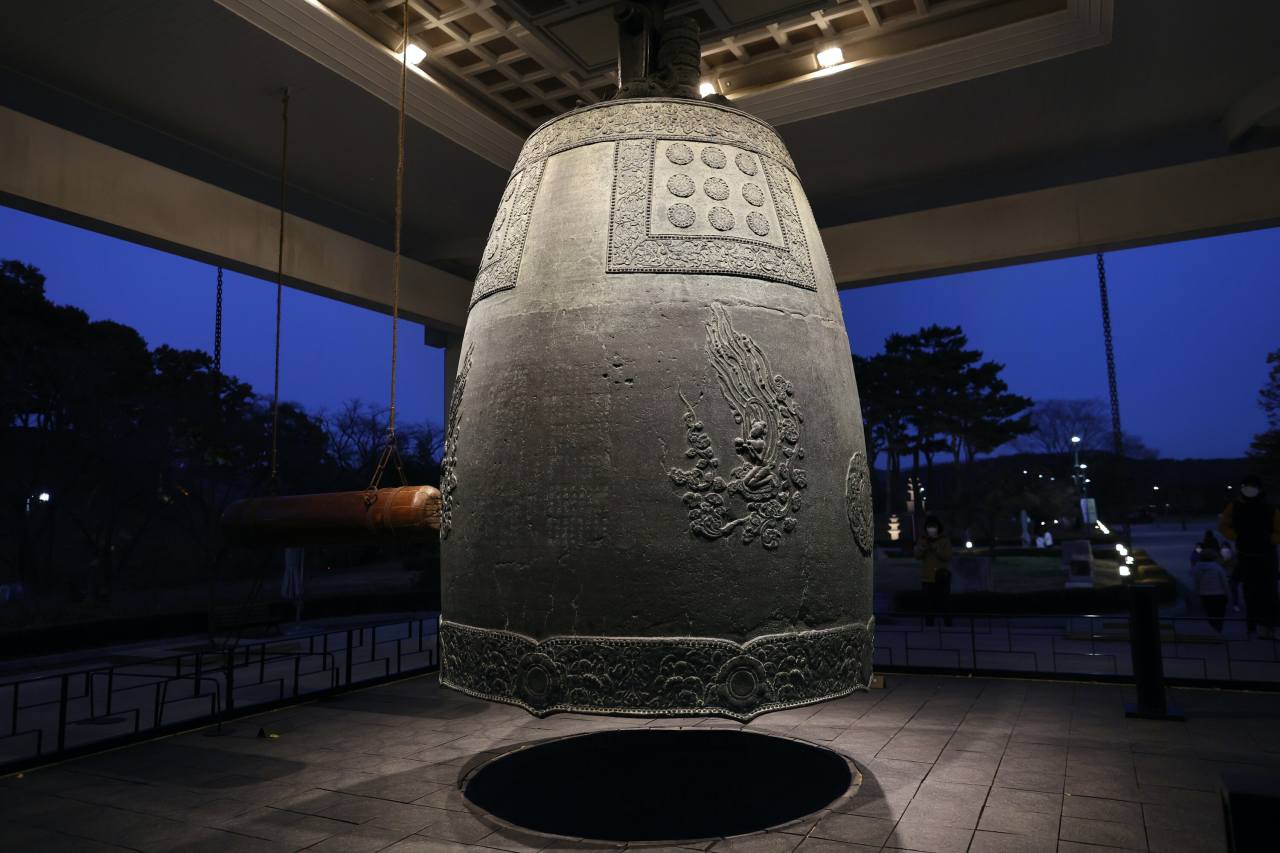
During the golden days of Silla Kingdom in the eighth century following the unification of the Korean kingdoms, the national religion Buddhism took Silla to a whole new height.
Peace and prosperity were expressed in the creation of the finest Silla Buddhist treasures, some of which have survived centuries of tumultuous history.
A trifecta of Buddhist treasures -- Buddha’s home, body and voice -- were completed in 771, when the Divine Bell of King Seongdeok the Great was successfully cast after decades of failed efforts.
The deep and lasting ringing sounds of the Divine Bell resonating in the hearts and minds of those nearby, was to “transcend believers directly to the ‘world of truth’” as it was inscribed on the Divine Bell.
Silla stonemasons, along with better known Baekje artists, created the one-of-a-kind 3.5-meter tall stone Buddha at the Seokguram Grotto in the middle of the eighth century.
Peace and prosperity were expressed in the creation of the finest Silla Buddhist treasures, some of which have survived centuries of tumultuous history.
A trifecta of Buddhist treasures -- Buddha’s home, body and voice -- were completed in 771, when the Divine Bell of King Seongdeok the Great was successfully cast after decades of failed efforts.
The deep and lasting ringing sounds of the Divine Bell resonating in the hearts and minds of those nearby, was to “transcend believers directly to the ‘world of truth’” as it was inscribed on the Divine Bell.
Silla stonemasons, along with better known Baekje artists, created the one-of-a-kind 3.5-meter tall stone Buddha at the Seokguram Grotto in the middle of the eighth century.
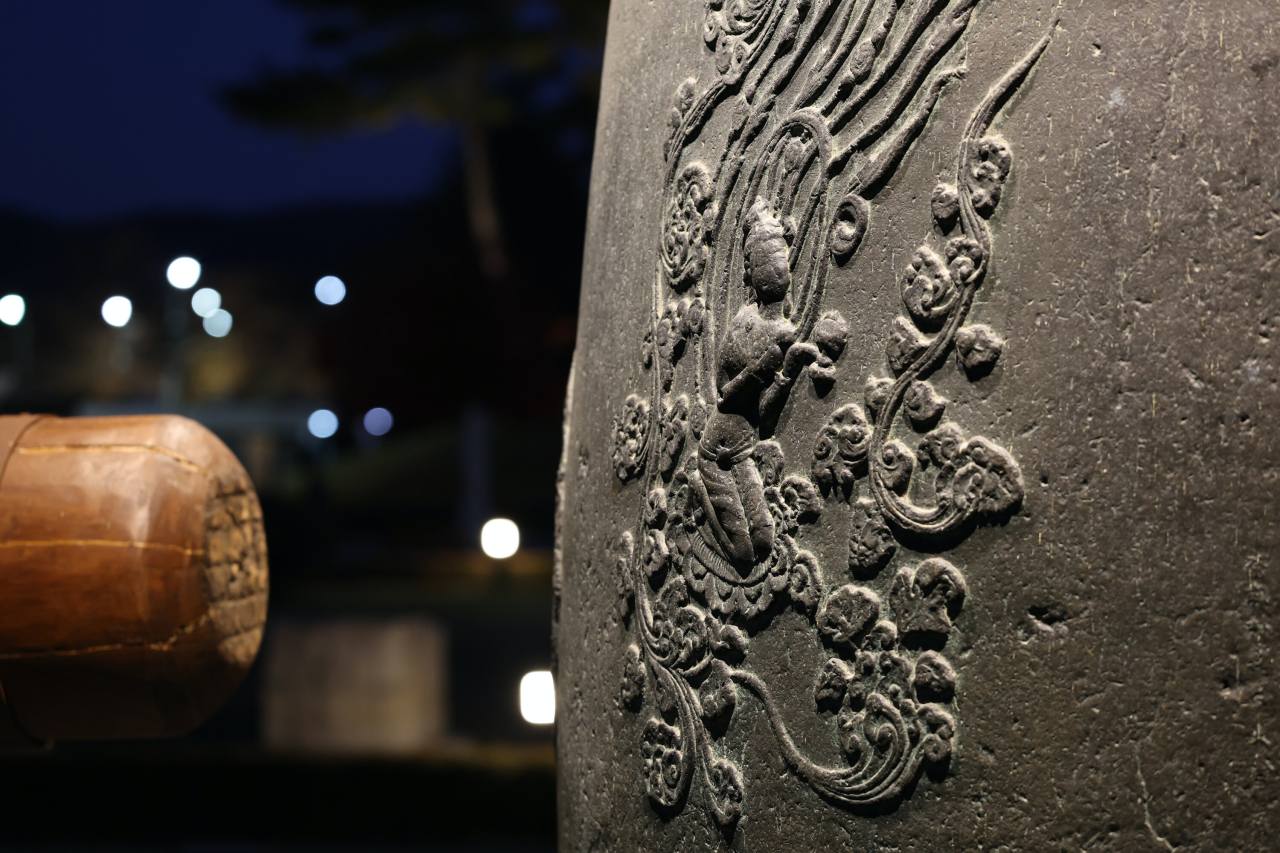
Buddha’s house at the Bulguksa Temple had already been built in 528.
The ringing sound of the Divine Bell of King Seongdeok the Great, also known as the Bell of Bongdeoksa Temple, named after the original home of the bronze bell, was heard far and wide in the Silla Kingdom.
A dragon named Poroe sits on top of the bell crown. “Poroe, a mythical dragon, is afraid of whales and its scream is the sound of the bell when it is struck with a piece of lumber shaped like a whale,” said Han Jung-ho, an expert in Buddhism art and a professor at Dongguk University.
The ringing sound of the Divine Bell of King Seongdeok the Great, also known as the Bell of Bongdeoksa Temple, named after the original home of the bronze bell, was heard far and wide in the Silla Kingdom.
A dragon named Poroe sits on top of the bell crown. “Poroe, a mythical dragon, is afraid of whales and its scream is the sound of the bell when it is struck with a piece of lumber shaped like a whale,” said Han Jung-ho, an expert in Buddhism art and a professor at Dongguk University.
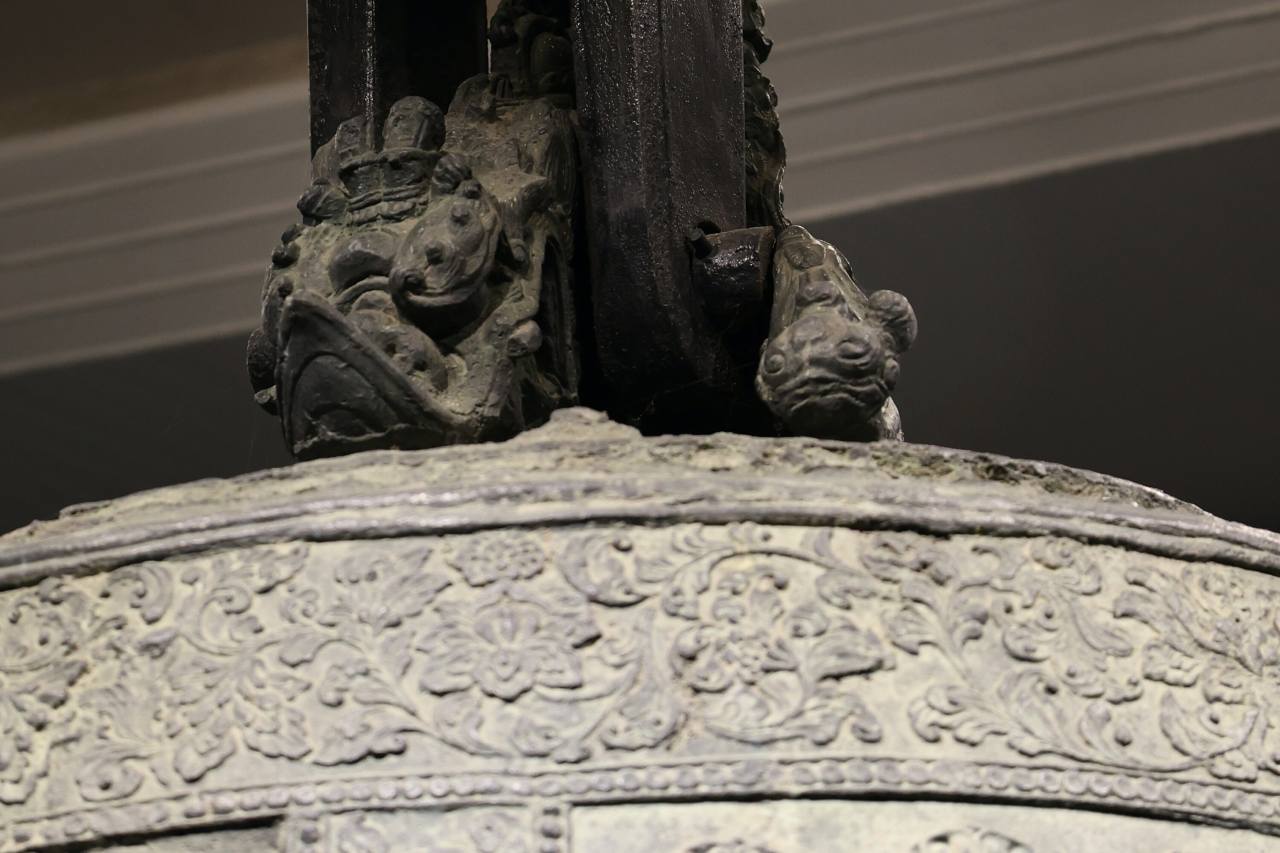
King Seongdeok’s third son, the 35th King of Silla Gyeongdeok, wanted to dedicate the giant bell to honor his father who is described on the Divine Bell as “King Seongdeok whose virtue was as high as a mountain and as deep as the sea,” but he never saw the completed bell.
It took King Gyeongdeok’s only son, the grandson of King Seongdeok, the 36th King Hyegong of Silla, to finally complete the making of the Divine Bell in 771, after 34 years of trying.
The man who oversaw the successful bellfounding was no other than the future 37th King Seondeok of Silla, who reigned from 780 to 785.
King Seondeok, whose birth name was Kim Yang-san, a member of the Jingol caste aristocracy, served as the top minister to the 36th King Hyegong (765–780) while overseeing the bell’s completion.
King Hyegong, who became king at age 7, survived multiple mutinies during his 16-year reign. He was killed at age 23 in a mutiny led by Kim Yang-san, who became the next monarch, the 37th King Seondeok of Silla.
Casting such a giant bell with 18.9 metric tons of molten metal for the 3.66-meter bell -- that is almost 25 centimeters thick at its thickest parts -- seems like an impossible task in the 8th century even after combining the know-hows from experts from all four Korean kingdoms which Silla had united.
The Divine Bell of King Seongdeok the Great has weathered 1,250 years of outdoor elements.
The site of the bell foundry has been lost in history but researchers have located ancient Bronze Age metal processing sites widely scattered in an area covering around 66,000 square meters.
A team of Korean research scientists and engineers from 12 disciplines led extensive research into the Divine Bell in 1996.
Metals can weaken and break when they are repeatedly frozen and thawed, but the Divine Bell’s composition holds some of the secrets to its longevity.
A team of researchers at the Research Institute of Industrial Science & Technology released an analysis of the bell’s composition.
A legend which said a child was sacrificed in the making of the bell -- from which the Divine Bell‘s its other name, Emile Jong (Emile Bell) derives -- was found not to be true, at least according to the metal composition analysis.
It’s mostly made of copper, about 80 percent, and tin, zinc, lead and sulfur make up the rest of the bell.
The presence of sulfur may have a role in preventing the bell from breaking apart, according to one of the researchers.
The deep and lasting resonance of the Divine Bell’s ringing sound was found to be mostly in two low frequencies in the 64 Hz range, causing the beating phenomenon.
A periodic variation in vibration occurs when a symmetrical combination of two harmonic waves of slightly different frequencies, 64.06 Hz and 64.38 Hz, resonates in the bell which causes the lasting and reverberating sounds.
It took King Gyeongdeok’s only son, the grandson of King Seongdeok, the 36th King Hyegong of Silla, to finally complete the making of the Divine Bell in 771, after 34 years of trying.
The man who oversaw the successful bellfounding was no other than the future 37th King Seondeok of Silla, who reigned from 780 to 785.
King Seondeok, whose birth name was Kim Yang-san, a member of the Jingol caste aristocracy, served as the top minister to the 36th King Hyegong (765–780) while overseeing the bell’s completion.
King Hyegong, who became king at age 7, survived multiple mutinies during his 16-year reign. He was killed at age 23 in a mutiny led by Kim Yang-san, who became the next monarch, the 37th King Seondeok of Silla.
Casting such a giant bell with 18.9 metric tons of molten metal for the 3.66-meter bell -- that is almost 25 centimeters thick at its thickest parts -- seems like an impossible task in the 8th century even after combining the know-hows from experts from all four Korean kingdoms which Silla had united.
The Divine Bell of King Seongdeok the Great has weathered 1,250 years of outdoor elements.
The site of the bell foundry has been lost in history but researchers have located ancient Bronze Age metal processing sites widely scattered in an area covering around 66,000 square meters.
A team of Korean research scientists and engineers from 12 disciplines led extensive research into the Divine Bell in 1996.
Metals can weaken and break when they are repeatedly frozen and thawed, but the Divine Bell’s composition holds some of the secrets to its longevity.
A team of researchers at the Research Institute of Industrial Science & Technology released an analysis of the bell’s composition.
A legend which said a child was sacrificed in the making of the bell -- from which the Divine Bell‘s its other name, Emile Jong (Emile Bell) derives -- was found not to be true, at least according to the metal composition analysis.
It’s mostly made of copper, about 80 percent, and tin, zinc, lead and sulfur make up the rest of the bell.
The presence of sulfur may have a role in preventing the bell from breaking apart, according to one of the researchers.
The deep and lasting resonance of the Divine Bell’s ringing sound was found to be mostly in two low frequencies in the 64 Hz range, causing the beating phenomenon.
A periodic variation in vibration occurs when a symmetrical combination of two harmonic waves of slightly different frequencies, 64.06 Hz and 64.38 Hz, resonates in the bell which causes the lasting and reverberating sounds.
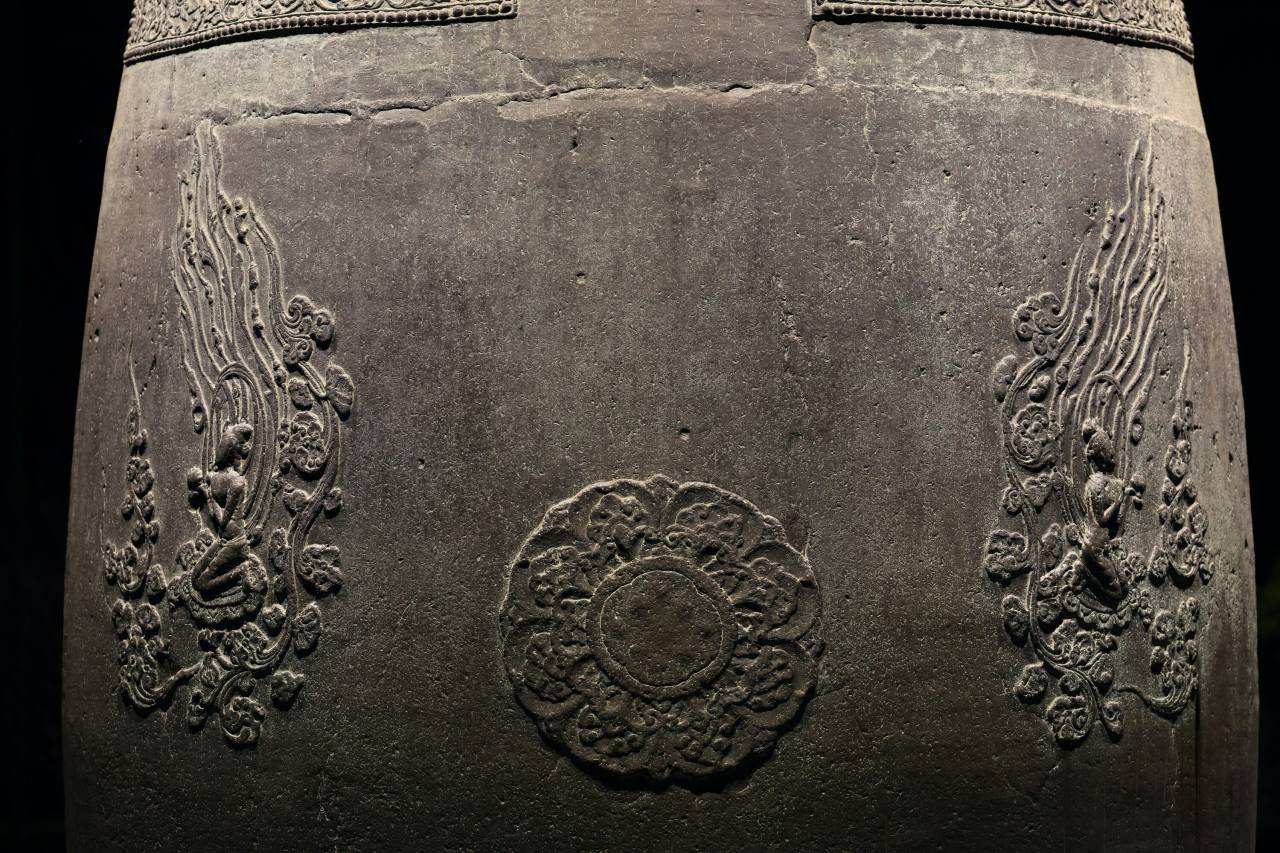
A concave opening on the ground, designed as an echo chamber under the Divine Bell to send the ringing sounds into the underworld, further amplifies its sound.
Another unique feature of the Silla bell design is a high-frequency chamber tube at the top of the bell which absorbs the high pitch frequencies.
The high-frequency chamber tube is designed around Poroe, the mythical dragon, which has an 8 cm diameter opening arch from which to hang the 18.9-ton bell to the bell tower.
When the Divine Bell of King Seongdeok was moved to its current bell tower at the National Museum of Korea in Gyeongju, North Gyeongsang Province, on May 27, 1975, engineers were confronted with a mathematical quandary.
Engineers calculated the weight of the Divine Bell and the force created when the bell is struck while hung from the new bell tower. A steel rod which can hold up the bell was tested and a new modern steel rod was cut to the right specifications to hold its weight.
Everything came to a halt, however, when the new metal rod, measuring 15 cm in diameter, would not fit through the 8 cm diameter opening of the dragon arch, called Yongryu, at the top of the bell crown.
The engineers had to use the original metal rod which they believe was made during the Joseon era when the previous bell tower was built, and when the original Bongdeoksa Temple was washed away during a great flood in 1460.
Researchers still have no idea how ancient Koreans were able to make such a strong steel rod.
The flood was not the only life-threatening event the Divine Bell endured.
Another unique feature of the Silla bell design is a high-frequency chamber tube at the top of the bell which absorbs the high pitch frequencies.
The high-frequency chamber tube is designed around Poroe, the mythical dragon, which has an 8 cm diameter opening arch from which to hang the 18.9-ton bell to the bell tower.
When the Divine Bell of King Seongdeok was moved to its current bell tower at the National Museum of Korea in Gyeongju, North Gyeongsang Province, on May 27, 1975, engineers were confronted with a mathematical quandary.
Engineers calculated the weight of the Divine Bell and the force created when the bell is struck while hung from the new bell tower. A steel rod which can hold up the bell was tested and a new modern steel rod was cut to the right specifications to hold its weight.
Everything came to a halt, however, when the new metal rod, measuring 15 cm in diameter, would not fit through the 8 cm diameter opening of the dragon arch, called Yongryu, at the top of the bell crown.
The engineers had to use the original metal rod which they believe was made during the Joseon era when the previous bell tower was built, and when the original Bongdeoksa Temple was washed away during a great flood in 1460.
Researchers still have no idea how ancient Koreans were able to make such a strong steel rod.
The flood was not the only life-threatening event the Divine Bell endured.
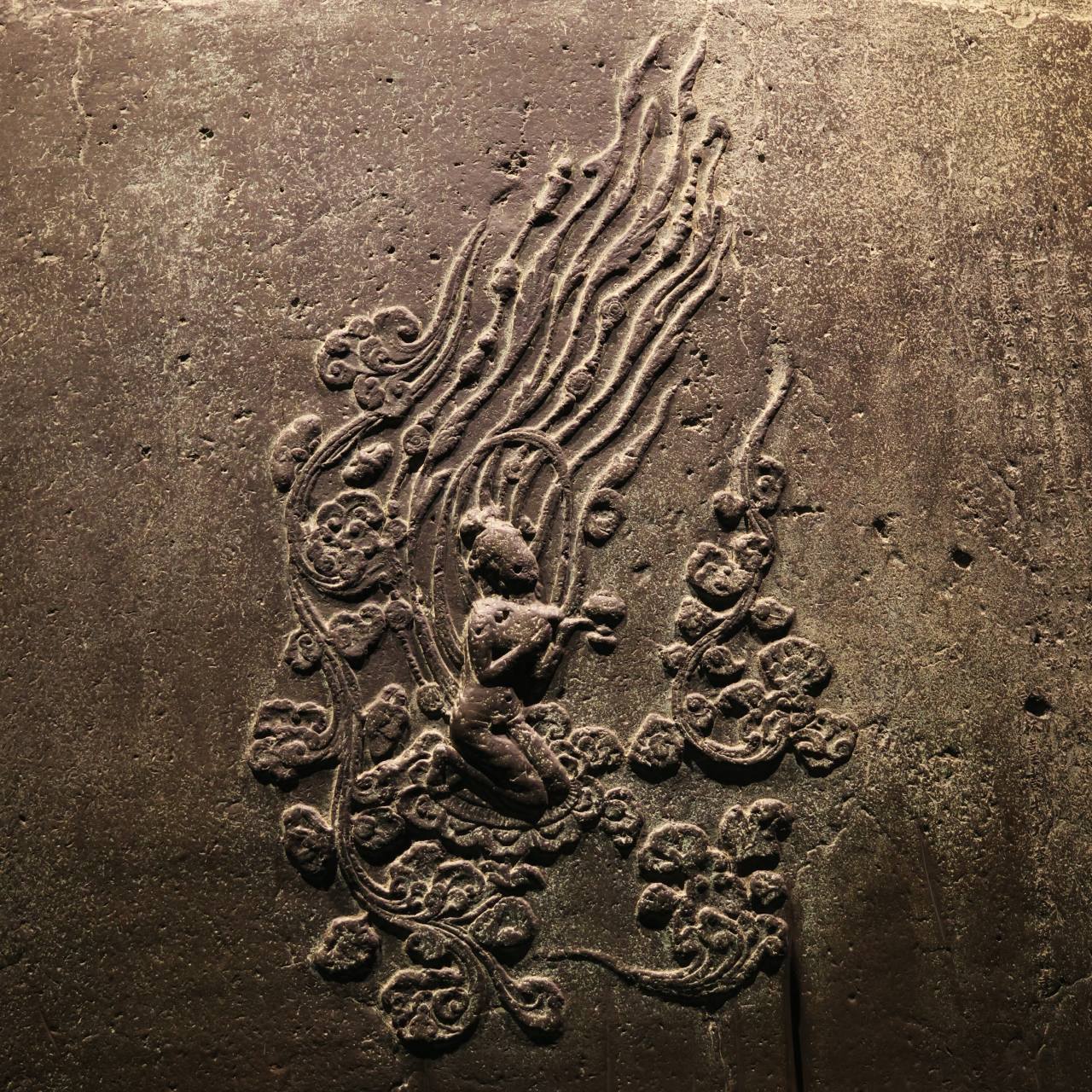
During the Joseon period when Neo-Confucianism was the law of the land, most of the bronze Buddhist bells around the country were repurposed into copper coins and military weapons.
King Sejong the Great had to step in and issue a decree in 1424 “not to destroy the Bell of Bongdeoksa Temple,” according to Joseon Sillok, the Veritable Records of the Joseon Dynasty of Korea.
By Hyungwon Kang (hyungwonkang@gmail.com)
---
Korean American photojournalist and columnist Hyungwon Kang is currently documenting Korean history and culture in images and words for future generations. -- Ed.
King Sejong the Great had to step in and issue a decree in 1424 “not to destroy the Bell of Bongdeoksa Temple,” according to Joseon Sillok, the Veritable Records of the Joseon Dynasty of Korea.
By Hyungwon Kang (hyungwonkang@gmail.com)
---
Korean American photojournalist and columnist Hyungwon Kang is currently documenting Korean history and culture in images and words for future generations. -- Ed.
-
Articles by Korea Herald








![[KH Explains] How should Korea adjust its trade defenses against Chinese EVs?](http://res.heraldm.com/phpwas/restmb_idxmake.php?idx=644&simg=/content/image/2024/04/15/20240415050562_0.jpg&u=20240415144419)











![[Today’s K-pop] Stray Kids to return soon: report](http://res.heraldm.com/phpwas/restmb_idxmake.php?idx=642&simg=/content/image/2024/04/16/20240416050713_0.jpg&u=)